Table of contents
The common juniper ( Juniperus communis) with its subspecies and varieties is the most widespread conifer. Juniper berries are used raw as a culinary spice and in medicine as a herbal remedy.
Use in the kitchen:
The taste of juniper berries (not: juniper berries) is pleasantly sweet and spicy to subtly resinous and bitter.
What do you do with juniper berries? The berries go well as a spice for cabbage, raw sauerkraut, pasteurized sauerkraut or they give pickled cucumbers a spicy note. 1 Juniper harmonizes well with other spices such aspepper, marjoram, caraway and bay leaves 2 and can make food more digestible. As a guideline, use three whole or two crushed berries per person. 3
To make a seasoning paste for savory dishes, the juniper berries are passed through a coarse sieve, raw or cooked, and seasoned with salt. Thickened and sweetened, the berries are used in the Alpine regions as a syrupy spread. 4
Soft, young shoots of the common juniper are valued as a seasoning ingredient in vegetable dishes and soups. To make a spread, the broth is thickened with sugar. 4
Vegan recipe for baked cabbage rolls with juniper berries:
First, cook the whole savoy cabbage (about 500 g) over a low heat for 10-12 minutes. Alternatively, you can also use red cabbage or white cabbage.
For the filling, cook 300 g of long grain rice together with 20 g of dried porcini mushrooms cut into strips, 2 juniper berries, 2 allspice berries, 2 bay leaves and a pinch of salt in 750 ml of drinking water over a low heat. Season the cooled rice with 2 tablespoons of soy sauce, 1 teaspoon of dried marjoram, 1 teaspoon of dried thyme and salt and pepper.
For the caramel sauce, gently heat 2 tablespoons of brown sugar and 0.5 teaspoon of ground cinnamon in a saucepan. When the sugar begins to caramelize, add 800 g of chopped tomatoes from the can. Increase the heat while stirring constantly and let the sauce cook for 5-8 minutes. Then season the caramel sauce with salt and pepper to taste.
Place a heaped tablespoon of the rice filling on each savoy cabbage leaf. Wrap the roulades tightly and place them in an ovenproof casserole dish. Finally, pour the caramel sauce over them and bake in a preheated oven (200 °C) for 15-20 minutes.
A detailed recipe description for the baked cabbage rolls in caramel sauce can be found HERE.
Recipe for (fresh) juniper berry tea:
For juniper berry tea, pour 1 teaspoon of crushed berries into a cup of boiling water and let the infusion steep, covered. After steeping for 5-10 minutes, strain the berries. 1.5 Information on the daily dose can be found under "Use as a medicinal plant".
A tried and tested tea mixture for drainage contains 30 g of juniper berries, 15 g of lovage root, 15 g of restharrow root, 15 g of birch leaves and 25 g of bearberry leaves. Pour 250 ml of boiling water over two heaped teaspoons of this mixture and let it steep for 10 minutes before straining it. Drink 2-3 cups of this daily. 1
| Not only vegans or vegetarians should read this: Vegans often eat unhealthily. Avoidable nutritional errors. |
Shopping - where to buy?
Juniper berries can be bought dried at supermarket chains such as Coop, Migros, Rewe, Spar and Edeka, in the organic supermarkets Denns and Alnatura, in drugstores, health food stores, organic shops or online. Some of the berries are certified organic (organic cultivation and no genetic engineering, pesticides or mineral fertilizers). We have not yet found any dried juniper berries at Denner, Volg, Aldi, Lidl or Hofer.
Trade names usually refer to the quality and not to the origin. For example, "Italian" means that the grapes are particularly large, uniform, dark blue and selected, but do not necessarily have to come from Italy. 5
The quality of medicinally used juniper berries (Juniperi pseudofructus or J. pseudo-fructus) and juniper oil (Juniperi aetheroleum) is defined in the European Pharmacopoeia. 6 Juniper oil or juniper berry extracts can be bought as phytopharmaceuticals as a component of ointments, tonics, juices or syrups. 1 Juniper oil is contained in rheumatism rubs, for example. 3 Ready-made medicines available in pharmacies are: juniper berries for chewing, crushed juniper berries for making a tea and juniper oil in gastro-resistant capsules for internal use. 6
Juniper berries (standard approval) are contained in bladder and kidney teas for flushing therapy. Other ingredients can be birch leaves, orthosiphon leaves, horsetail, goldenrod. 5 According to Pharmacopoea Helvetica (Ph. Helv.), "juniper spirit" (Juniperi spiritus) must have a composition of 0.5 g juniper oil, 66.3 g camphor spirit and 33.2 g purified water. 5
Common juniper is cultivated in several garden forms and is available as an ornamental plant. Well-known varieties include 'Compressa', 'Depressa aurea', 'Hibernica' or 'Hornibrookii'. 2
Found in the wild - Season:
The common juniper grows as an upright to prostrate shrub or as a tree with a narrow, conical to oval crown. The bark is grey to reddish brown and the root system is deep. The 1 to 2 centimetre long, needle-shaped leaves are arranged in whorls of three. On the upper side of the rigid and sharply pointed, dark to blue-green leaves, there are light stomata and wax stripes. The cones are tiny; the male ones are egg-shaped, the female ones are round. Round, green pseudo-fruits develop from the female cones. Over the course of three years, they turn black and take on a grey, frost-like coating (wax layer). 1,2,3,7 Are all juniper berries edible? Only the ripe berries of the common juniper (from the 3rd year) can be eaten, the green ones are not.
The common juniper prefers the dry, sandy, stony, calcareous and mostly alkaline soils of the northern hemisphere. The common juniper is very weak in competition with other woody plants, but can be very dominant on heathland and moorland, open spaces, dry and sunny pastures or on rocks with the aforementioned soils. 2
Other main areas of distribution of juniper plants are open forests, matgrass pastures, dwarf shrub heaths, forest mantle bushes, hedges, limestone pine forests, acidic pine forests, drought-tolerant mixed oak forests, 4 undergrowth, pine forests and barren and dry slopes. The common juniper grows from the plains up to the high Alps. 1
The main flowering period of the common juniper is from April to May. 2 The tender shoot tips are harvested in March and April, and the more mature leaves from March to June. 4 The harvesting season for the mature juniper berries is in autumn and extends from the end of August to mid-September or October. 1,3
The sharp, needle-like leaves make picking the juniper berries difficult. You can knock the berries off the branches with a stick and collect them on spread-out cloths. 3 To avoid injuries, it is advisable to also wear gloves. 8
Storage:
Fresh juniper berries are laid out to dry on a cloth in a shady, airy place. Depending on the climate, the drying process can take up to three weeks. If you use a dehydrator, you can shorten the drying time. Berries that have turned brown or have holes in them should be discarded, as they may be infected with pests or diseases. 1.8
Dried juniper berries should be stored in a tightly sealed glass or metal container and protected from light. Plastic containers are unsuitable as they have a negative effect on the essential oil. 5 Dried fruits can be kept for several years. 8
Ingredients - nutritional value - calories:
The berries of the common juniper contain 0.8 to 2% of complex essential oil. 10 According to the European Pharmacopoeia, the essential oil content must be at least 1% and the oil composition is also specified there. 5
Other ingredients of the berries are about 30% invert sugar, 3-5% tannins, small amounts of flavonoids and biflavones as well as leucoanthocyanins and diterpenes. 5
The essential oil contains 20-45% alpha-pinene, 13-29% sabinene, 7-18% myrcene, 2.5-11% limonene, 0.7-6% terpinen-4-ol, 2-3% beta-pinene, as well as sesquiterpenes and small amounts of nitrogenous compounds. 5
Health aspects - effects:
How healthy is juniper? The experimental studies on the diuretic (diuretic) effect of common juniper berries are in some cases very old and do not provide a consistent picture. 5
Terpinen-4-ol is considered to be an ingredient that determines the effectiveness and has been found to have a diuretic and natriuretic effect (increase in urine excretion). 5
How does juniper affect health? The mechanism of action lies in irritation and thus promotes increased blood flow to the kidneys. In isolation and in animal experiments, terpinen-4-ol shows diuretic (aquaretic) and antispasmodic (spasmolytic) properties and probably a direct effect on the contraction of smooth muscles (motility-promoting). 9
Dangers - Intolerances - Side effects:
The HMPC ( Committee for Herbal Medicinal Products) points out that patients with kidney disease should not take medicines containing berries or oil of common juniper. Although there are no known interactions or interactions with other medicines, 6,9 a combination with synthetic diuretic medicines is nevertheless not recommended. 5
With long-term use of more than four weeks 3 or with overdose (e.g. more than 150 mg of essential juniper oil daily), hematuria and kidney irritation or even kidney damage are possible, especially if pharmaceutically unsuitable quality is used. 5,9 After an overdose, the urine smells like violets and pain occurs in the kidney and bladder area. With external use, skin irritation or allergic skin reactions occasionally occur. 6,7
If fever, urinary retention, cramps when urinating or blood in the urine occur during treatment, medical advice should be sought. 6
There are currently no studies on the safety of taking juniper berries or juniper oil during pregnancy and breastfeeding, or for children and adolescents. The use is therefore not recommended for these groups of people. 6,7
Use as a medicinal plant:
The ripe berry cones (Juniperi pseudofructus or pseudo-fructus) of the common juniper and the essential oil obtained from them (Juniperi aetheroleum) are used medicinally.
According to the HMPC ( Committee for Herbal Medicinal Products), the herbal medicine is recognized for dyseptic digestive complaints and flatulence. In the case of mild urinary tract complaints, the herbal medicine can be used to increase the amount of urine and thus to flush the urinary tract. Juniper oil is used externally for mild muscle and joint pain in oil rubs and baths, and internally as a diuretic. 5
ESCOP ( the umbrella organisation of national European societies for phytotherapy) lists the improvement of renal water excretion (via the kidney), dyseptic digestive complaints and loss of appetite as indications, and Commission E ( the Expert Committee for Herbal Medicinal Products) lists dyseptic digestive complaints. 5
The dosage of the finished medicinal products is as per the package insert. If you use juniper berries or juniper oil for flushing therapy, you must drink plenty of fluids. Since juniper can have an irritating effect, applications should be limited to a few weeks. 4,6 It is best to seek advice from a specialist before starting any concomitant treatment with juniper.
To flush the urinary tract, start with five berries per day and increase the dose by one berry each day until you reach 15 berries per day. Then reduce the dose gradually until you reach five berries per day. 6
Drink a cup of juniper berry tea 2 to 3 times a day. The average daily dose is 4 to 6 g of juniper berries. 6
For internal use of juniper oil, use 60 mg to 100 mg as a daily dose, which is taken three times throughout the day. For external use as a bath additive, add 1 to 1.5 g of juniper oil to a full bath. The frequency of use is three to four full baths per week. 6
Folk medicine - natural medicine:
Juniper berries were used in ancient times by the Greeks, Romans and Germanic tribes. 1 Dioscorides, one of the most famous doctors of antiquity (1st century AD), describes juniper as "good for the stomach, effective against flatulence, abdominal cramps, and also diuretic". 5 In the Middle Ages, attempts were made to reduce the risk of infection during epidemics by burning juniper incense. 1 The North American Indians used juniper extracts from the Rocky Mountain juniper ( Juniperus scopulorum) for all kinds of ailments, including kidney problems. 7
Many of today's traditional uses of juniper berries go back to Sebastian Kneipp, a well-known German hydrotherapist and naturopath of the 19th century. 3
In traditional medicine, ripe juniper berries are used to treat coughs, foul-smelling diarrhea, flatulence (carminative), muscle tension, heartburn, gallbladder and liver problems, urinary tract infections, rheumatic complaints, to remove water (diuretic) and as a spice to stimulate the appetite and aid digestion (stomachic). 3,4,5,9
To eliminate bad breath, the berries are chewed. The essential oil is used externally, e.g. in liniments or bath additives, to treat rheumatism. 4.9
Since juniper is an irritant or can have an irritating effect, the medicinal plant is combined in folk medicine with marshmallow ( Althaea officinalis) or with corn (corn oil) ( Zea mays). 7
In the past, juniper wood was popularly used as a diuretic and to treat rheumatism and gout. Today, its use is no longer common. 6,7
Occurrence - Origin:
The common juniper is native to Europe, North America and North Africa as well as to the Middle East, North, Central and East Asia. With its varieties, the common juniper even inhabits the northernmost fringes of South Asia and can be found there at over 4,000 meters. If you count the subspecies and varieties together, it is the most widespread conifer. 1,2,5
In Germany, the stands mostly arose secondarily through grazing, as the common juniper is not a food plant for livestock. In Austria and Germany, the common juniper is partially or completely protected. 1,2,5
Growing in the garden or as a potted plant:
The common juniper needs an open location where it can spread freely. The soil should be dry and calcareous, as well as sandy or stony. The seedling is planted in early spring so that it can grow well until the first winter. If planted in autumn, the young shrub must be protected from frost damage in the first winter. Juniper is generally hardy, however. 7,10
Creeping varieties with flat branches are suitable as ground cover. The common juniper is often used as an ornamental shrub in cemeteries. The numerous garden forms differ from one another in terms of height, growth form and the color of the needles. If you plant tall juniper varieties, you should keep a distance of about 70-100 cm from other plants. 10
Juniper can also be grown as a potted plant on the balcony or terrace. The location should be as sunny as possible. 10
Cultivation - Harvest:
Juniper berries are imported from Croatia, Italy and Albania. 5
There currently appears to be no commercial cultivation of common juniper, or only very limited cultivation. The commercially available juniper products probably contain plant components from wild collection. Controlled organic juniper berries, however, probably come from targeted cultivation.
It is known that Albania is one of the world's most important producers of medicinal and wild plants. Sage, juniper, thyme and lemon balm from wild collection provide a good seasonal income for people from remote regions. 11
Danger of confusion:
Juniper can easily be confused with the sabine ( Juniperus sabina), the so-called stinking juniper. All parts of the sabine are highly poisonous, especially the essential oil. Important distinguishing features from the taller growing common juniper are the broad, spreading and more shrubby growth of the sabine. The young leaves (needles) of the sabine are needle-shaped. The common juniper also develops pointed needle leaves. The older shoots of the sabine, however, have scale-like leaves. When the leaves and branch tips are crushed, the unpleasant-smelling and poisonous essential oil of the sabine becomes noticeable. 4
Animal protection - species protection - animal welfare:
The pollination of juniper flowers takes place without the help of insects. The plant secretes a so-called micropylar droplet, which catches pollen spread by the wind. 2
Juniper is an essential food source for the caterpillars of the coniferous bark moth ( Peribatodes secundaria) and the pine moth ( Bupalus piniaria). 2
Blackbirds, black grouse, hazel grouse and fieldfares are responsible for spreading the seeds. 1,2
General information:
The common juniper ( Juniperus communis) is a plant species in the genus Juniperus. It belongs to the subfamily Cupressoideae within the family Cupressaceae. The genus Juniperus comprises about 50 to 70 species, of which only the common juniper and the sabine ( Juniperus sabina) grow wild in Central Europe. 2,12
The common juniper (lat. communis = common) forms, together with seven varieties or three subspecies (scientifically not yet clearly defined) within the genus Juniperus, the section of the same name Juniperus. 2,6
From a botanical point of view, the berry-like juniper cones are not fruits because they do not grow from an ovary. However, they can be called false fruits, hence the medical term Juniperi pseudo-fructus (pseudofructus).
Alternative names:
What else is juniper called? Due to its wide distribution, there are numerous regional names for the common juniper. Many names refer to the use, properties or location of the plant. The best known alternative name is probably heath juniper (heath juniper).
Other common names for the plant or the berries are Machandelbaum, Machandelbeeren, Machandel, Machandelboom, Kranewittbaum, Kranewitterbeeren, Kranewitt, Kranawitten, Kranawitterstrauch, Weihrauchbaum, Feuerbaum, Räucherstrauch, Reckholder (older also Reckholter, Alemannic), Quickholder, Queckholter (Middle High German), Wecholter (Middle High German wëcholtër), Wachtelbeerstrauch, Wachandel, Jochandel, Kaddigbeeren, Kaddig, Krammetsbeerenstrauch, Krammetsbaum, Kronabit, Grammelstaude, Weckhalter or Schnapsbeere. The spelling "Wachholderbeere" is a common misspelling.
In English, the common juniper is called the common juniper. The juniper berries are known as juniper berries or juniper fruit.
Keywords for use:
According to Wikipedia, the wood of the common juniper is used in the manufacture of small furniture, for turning and for carving. 2
In veterinary medicine, heather juniper is used as a diuretic and to stimulate appetite.
In the cosmetics industry, juniper oil is a popular ingredient in spicy perfumes.
The food industry uses large quantities of juniper berries as a spice and to produce spirits (gin, Bergila, Borovička, Köhm, Kranewitter, Krambambuli, Péquet, Steinhäger or Genever or Genièvre and Genèvrette). Genever is Dutch and is derived from juniperus. 2.5
Juniper is considered to be a good incense, and you can use dry shoots, wood and berries. The purifying power of the smoke is said to wake you up (hence the folk etymological interpretation of the name), refresh the atmosphere and dissolve heavy energies.
Literature - Sources:
Bibliography - 12 Sources (Link to the evidence)
| 1. | Niederegger O, Mayr C. Heilpflanzen der Alpen. Gesundheit aus der Natur von A bis Z. Innsbruck; 2006. Tyrolia-Verlag. |
| 2. | Wikipedia Gemeiner Wacholder. |
| 3. | Pahlow M. Das grosse Buch der Heilpflanzen. Gesund durch die Heilkräfte der Natur. 8. Auflage. Hamburg; 2019. Nikol Verlagsgesellschaft mbH & Co. KG. |
| 4. | Fleischhauer S. G., Guthmann J., Spiegelberger R. Enzyklopädie. Essbare Wildpflanzen. 2000 Pflanzen Mitteleuropas. 1. Auflage. Aarau; 2013. AT Verlag. |
| 5. | Blaschek W. (Herausgeber). Wichtl –Teedrogen und Phytopharmaka. Ein Handbuch für die Praxis. 6. Auflage. Stuttgart; 2016. Wissenschaftliche Verlagsgesellschaft mbH. |
| 6. | arzneipflanzenlexikon.info Wacholder. |
| 7. | Bown D. Kräuter. Die grosse Enzyklopädie. Anbau und Verwendung. 2. Auflage. München; 2015. Dorling Kindersly. |
| 8. | gartenjournal.net So ernten Sie die Früchte vom Wacholder. |
| 9. | Schilcher H., Kammerer S., Wegener T. Leitfaden Phytotherapie. 3. Auflage. München; 2007. Elsevier GmbH. |
| 10. | gartenjournal.net So pflanzen Sie Wacholder richtig – Tipps und Tricks. |
| 11. | flurundfurche.de Kräuter auf kargen Böden. |
| 12. | Wikipedia Wacholder. |

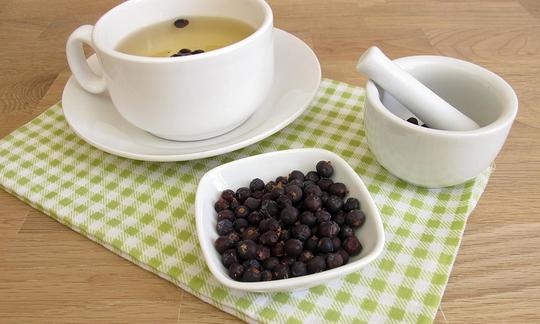

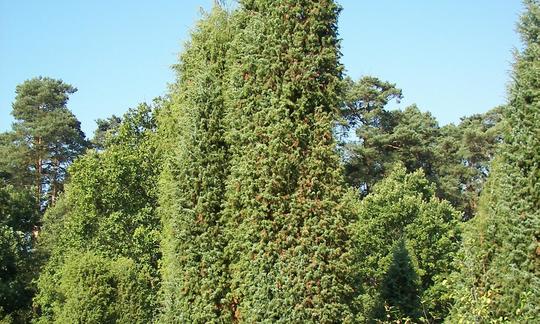

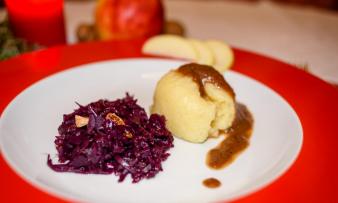
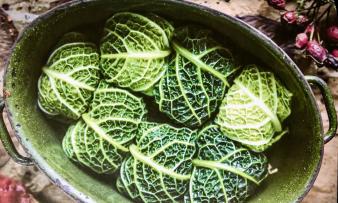
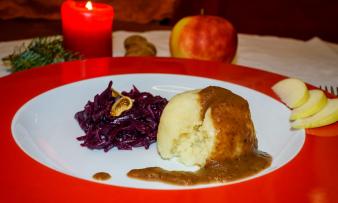


Comments